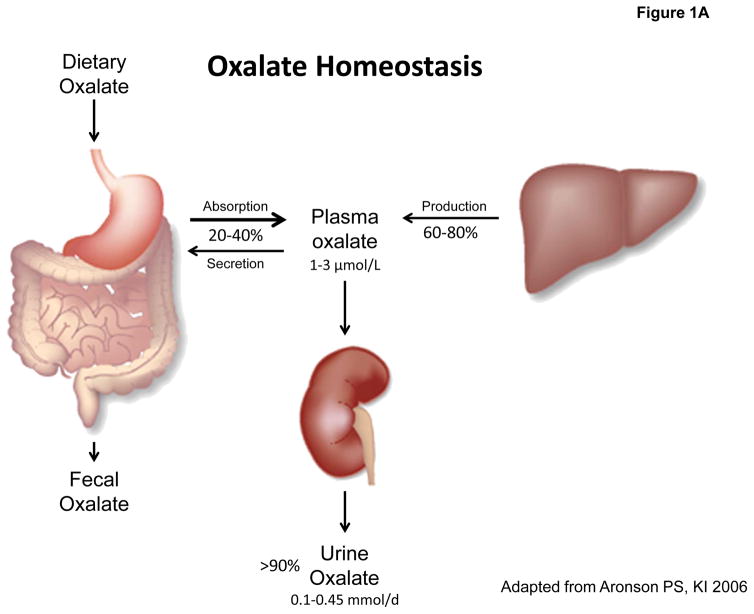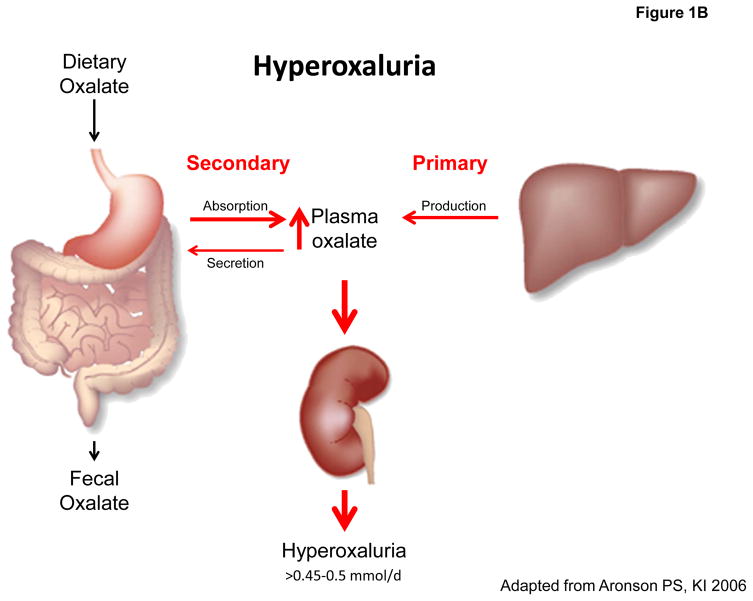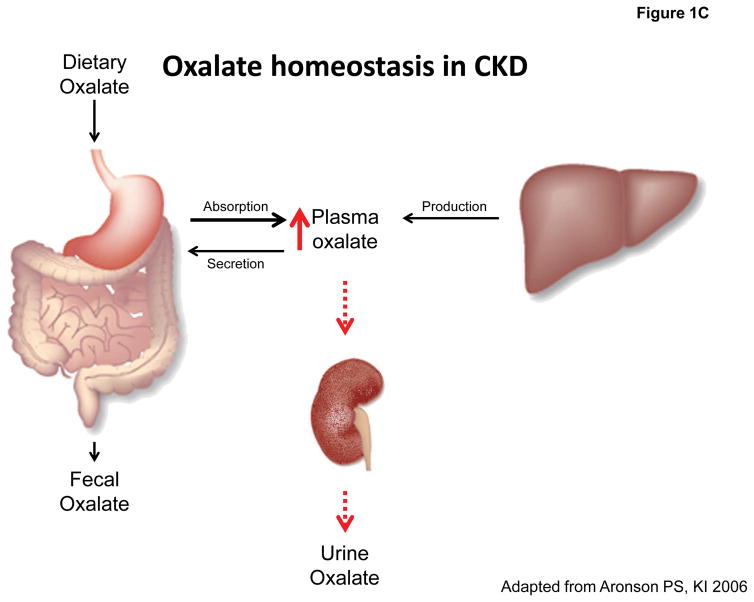Figure 1. Oxalate homeostasis in health and disease.
A: Oxalate homeostasis is determined by the contribution of dietary (20–40%) and endogenous oxalate (60–80%) to plasma oxalate concentration (normal: 1–3 μmol/L), which is maintained low by > 90% of plasma oxalate excreted by the kidney (normal: 0.1–0.45 mmol/d). B: Hyperoxaluria is defined by a urinary oxalate excretion of >0.45–0.5 mmol/d and may occur as a consequence of endogenous overproduction (primary) or exogenous oversupply (secondary). C: Oxalate homeostasis in CKD is impaired secondary to reduced renal clearance of oxalate leading to elevated plasma oxalate levels.



